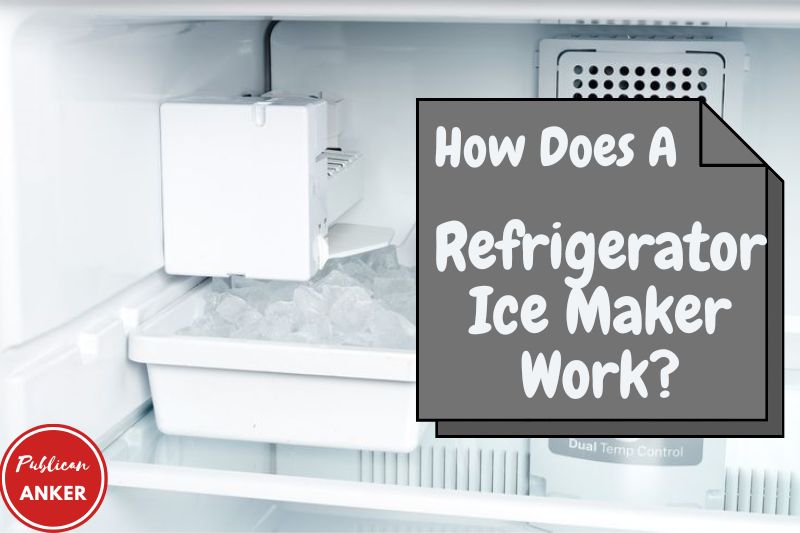You are familiar with kitchen appliances and want to know How Does A Refrigerator Ice Maker Work. It’s a smart decision. If you know how your freezer works, you can fix it yourself. Are you worried it will be confusing and frustrating? Publican Anker promises that this tutorial will be easy to follow today.
This is the first tutorial in the history and legend of the refrigerator making ice. It will be a pleasure. For more information, stay tuned at the end of this post.
A Chilling History
Dr. John Gorrie designed the first icemaker in 1850. And Thaddeus Lowe made the first commercially available one in 1866, according to eHow. However, neither of these machines allowed owners to make ice at their homes.
It wasn’t until 1953 that Servel started selling refrigerators with built-in ice makers. This meant that you could make ice at home without the need for an ice tray.
Frigidaire invented the first in-door ice-dispensing refrigerator. It wasn’t available until 1965. Built-in icemakers remained intact till the French door.
These fridges place the freezer at the bottom. This requires a mini freezer for the maker to fit inside the refrigerator. These are normally on the refrigerator sides or inside the ice dispenser door.
How Does A Refrigerator Ice Maker Work?
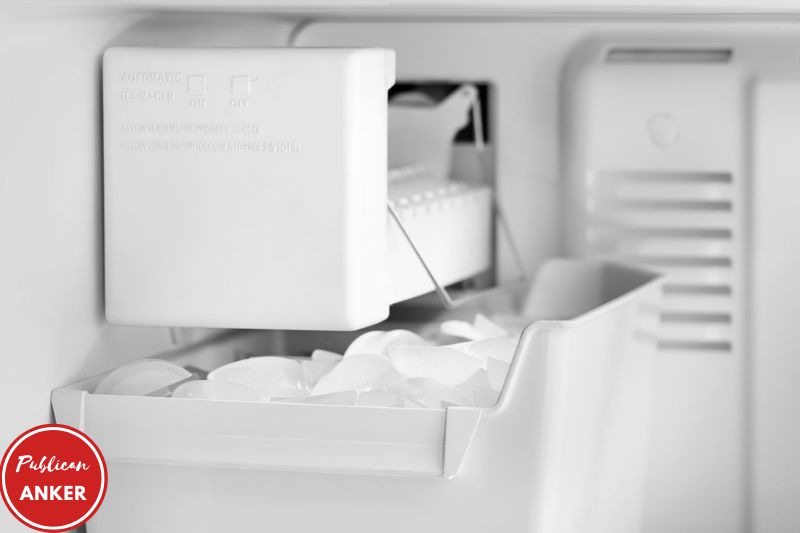
Ice was made manually before automatic ice makers. It had to be made by placing water in a mold and then freezing it.
After connecting power and water, the maker should start manufacturing ice automatically.
At the beginning of each cycle, an electrical signal is sent to the water valve to fill the ice mold. The freezer then begins to freeze the water. The inbuilt thermostat stops this operation when the cubes reach 5-9 degrees Fahrenheit.
Once the cubes are created, a heating coil activates to release them from their molds. The icemaker’s ejector knives are used to push the cubes out of the molds. They are then funneled into the collection tray.
The tray is separated from the dispenser at its front by a shaft. This shaft is opened when the button or lever (depending on which model) is pushed down.
This will continue until the maker’s front shutdown arm notifies that the ice cubes are full.
This is a complex process that involves many interdependent steps. A failed icemaker can result from any number of broken mechanisms.
Learn More about the Refrigeration Cycle
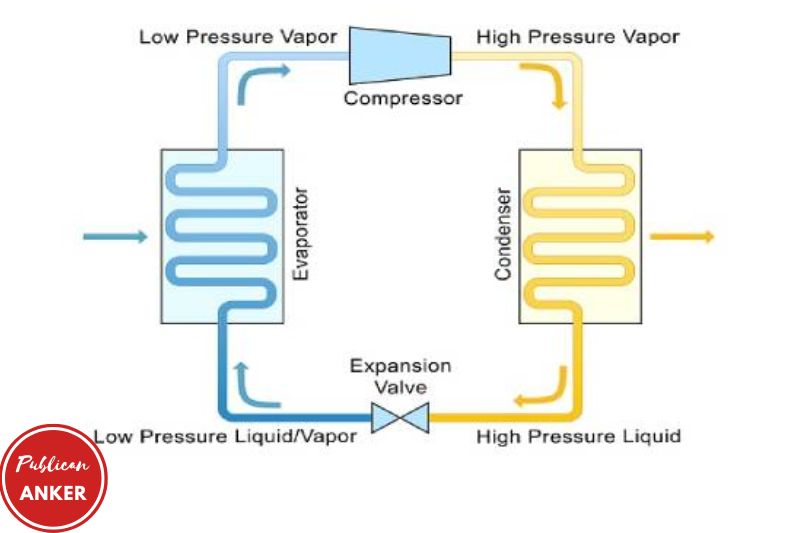
Refrigeration is a process in which work is done to move heat from one location to another.
The most common method is circulates a working fluid through a vapor-compression or absorption. This working fluid is typically a calm, low-boiling liquid or a cold, high-boiling gas.
The refrigeration cycle can cool a space (such as a room or vehicle) or cool a substance (such as food or blood). The cooled space is called the refrigerated space or cabinet. The cooling substance is called the product.
The environment doesn’t let heat from a cooler area or a product at a higher temperature pass through.
The refrigeration cycle is based on the principles of thermodynamics. As the working fluid goes through the cooling cycle, it changes from a liquid to a gas and back to a liquid.
The refrigerant absorbs heat from the refrigerated space or product as it evaporates and rejects heat as it condenses. This heat transfer process is the basis for the refrigeration effect.
The chilled compartment or product’s temperature is difference from the surrounding environment. The working fluid’s qualities, and the refrigeration system’s design affect refrigeration cycle efficiency.
Read more relevant posts here:
- How Does A Refrigerator Work
- How Do You Know If Your Refrigerator Compressor Is Bad
- How To Put GE Refrigerator Into Defrost
Why Is My Ice Maker Not Working?
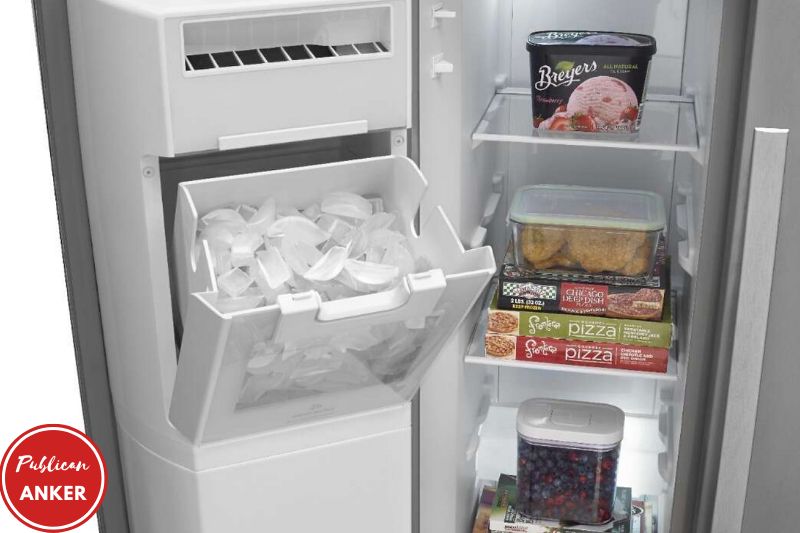
There are many reasons an icemaker may not work properly. Some fixes are easier than others. The icemaker shutoff arm could be defective or accidentally turned off.
Failing make thermostats can also cause ice production not to continue. The water valve will not open if the temperature is too low. The maker motor, which sets the cycle in motion, could be a more complicated issue.
There are several reasons your maker may not work:
- Your home plumbing line is not supplying enough water pressure.
- The freezing temperature, in general, is too high to make ice.
- The water filter must be changed.
- Filter tubes that are blocked or frozen (so that water cannot flow into the ice tray)
- Faulty icemaker thermostat
- Water valves that are clogged or defective
- Faulty icemaker motor (maker cycle cannot advance due to a fault)
FAQs
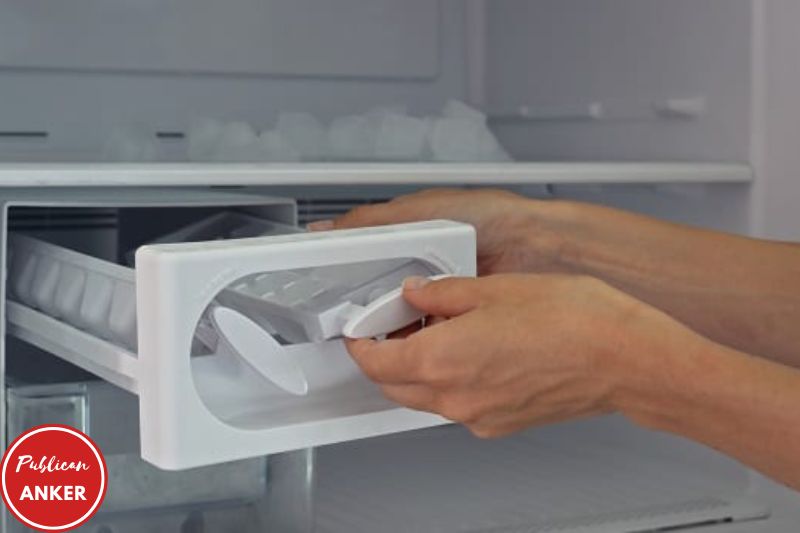
How Long Before The Maker Fills With Water?
It is safer to wait at most 24 hours. If the icemaker was placed, but the waterline wasn’t added until later, the maker will cycle in a matter of minutes. Once the water is turned on, the home icemaker will fill the first cubes and process them for approximately 1 1/2 hours.
How Does An Ice Maker Know To Make Ice?
This tray is kept in the freezer so it can get cold and freeze. A sensor is located nearby, which measures the water’s temperature and waits for it to reach a specific temperature. Once the water reaches this temperature, it is ready to be removed.
Do Fridges With Ice Makers Need To Be Plumbed In?
Some fridges have built-in ice makers or water taps. Others do not require any plumbing. These fridges that don’t require plumbing use a water tank to make ice and water. This water tank must be manually refilled.
Can I Pour Water Into My Maker?
Fill a tray of water with water and place it in the freezer. Wait for 30 minutes. Then, you will have ice. The process is the same regardless of whether you use electric or manual. Add about 4 ounces of water to the mold of your maker and let it sit for at least 2 hours.
Which Refrigerator Has The Most Reliable Maker?
The Most Reliable Refrigerator (Bottom freezer with Maker)
- Samsung 18%
- Kenmore 19%
- LG 19%
- GE 19%
- Maytag 22%
- Whirlpool 25%
- Kitchen Aid 26%
- Frigidaire 35%
What Tells The Ice Maker To Fill With Water?
The ice maker cycle should start immediately after connecting electricity and water. The freezer freezes water after a water valve is electrically signaled to fill the ice mold.
How Does An Ice Maker Know When To Dump The Ice?
The ice maker freezes the ice and then dumps it into a holding bin for people to use. Sensors in the holding bin stop the ice-making process when the bin is full. Automatic ice producers release cubes by inverting and twisting a flexible plastic tray.
Conclusion
On hot summer days, a refrigerator icemaker is the best choice. It is easy to understand how the ice machine works. Take a look at this. How you use the machine will determine its durability. Thank you for reading this post.
How To Reset LG Refrigerator Ice Maker Top Full Guide 2023
Icebox Vs Refrigerator 2023: What Is The Best For You
